By Premlata Venkataraman
thepatrika@aol.com
Driving from Coimbatore last December, we reached the Ernakulam-Kochi metro area. The roads and streets of Kochi had the usual hustle and bustle. Decades before, it was a much smaller, relaxed town. As we
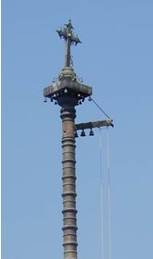
Eastern Cross atop a Dwajastambham.
passed a place of worship getting a new coat of paint, we assumed they were getting ready for the upcoming Ulsavam (festival). It was a typical Kerala structure. The kodi maram (dwajasthambham), the ceremonial copper flagstaff was being cleaned; we noticed that it had an Eastern Orthodox Cross atop it. Intrigued, found that this was a Syrian Orthodox church and they were getting ready for Christmas! Now, this in a
snapshot, was the southern part of Kerala!
Serene and bucolic, Cochin has been welcoming traders, explorers and travelers to its
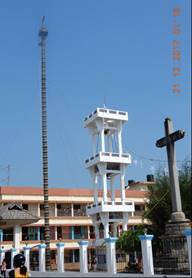
     Church in Alappuzha.
shores for centuries. They have left their mark — a 400-year old synagogue, churches that resemble Hindu temples and also ancient mosques set up by Arabic traders, long before the advent of Islam via the Turkic invasions. The first mosque ever built in India was in Kerala.
Of course, many old and ancient temples are open for worship with tens of thousands of devotees offering vazhipaadu (special worships) and fulfilling nerchas (vows) unbroken through very many more centuries. This setting of various places of worship reflecting so many major religions is a reflection of the makeup of the denizens of Kochi. Hindus are 44 % of the population, followed by 38 % Christians, and 18 % Muslims. There is very little religious strife in this town unlike many other cities in India. The high literacy rate of 98% in Kerala could be one reason.
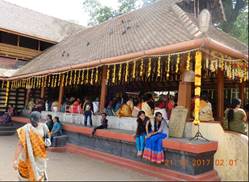
The Bhagavatghi Temple in Alappuzha.
No visit to this part of the country is complete if we do not include a boat trip on the backwaters along the Arabian coast of Southern Kerala. After a visit to the ancient Bhagavathy temple in Alappuzha, near Kochi, we went into the modern resort of Punnamada to savor the beautiful backwaters. Floating along the rivers in a small open boat with several houseboats going past us, it was idyllic. We floated past neighborhoods along very
narrow canals barely 20-feet wide and navigable only in motorized canoes. It was amazing how people have made a lifestyle along this maze of intricate waterways.
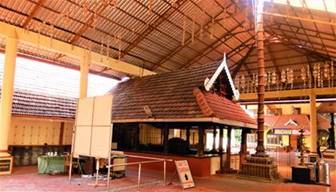
    Temple worshipped by Adi Shankara in Kaaladi.
Though the waters were clear and lapped gently along the sides, you could see the water hyacinth (an invasive species of water plant) choking the waterways and affecting the aquatic life beneath. One
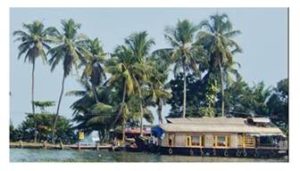
          A house boat in Kerala Kaayals.
hopes they find a way to rid these pests from destroying the natural flora and fauna of the waterways.
People living in Kerala have learned to live with water. You could see cheena valas (Chinese nets in Malayalam) dotting the seashores in Kochi. (See below the picture of the nets used to catch fish.) Now they are used mainly as a tourist attraction. With abundant coastlines and
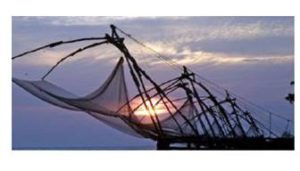
            Cheena Valaas in Kochi.
backwaters, seafood is a staple in the Kerala diet for many. People use the waterways to go to work (see the photograph below). These special ferries worked like bus routes along the waters.
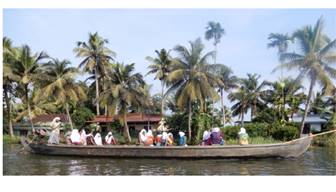
    A “commuter” boat in the Kerala backwaters.
It was a near perfect vacation, though very, very short. Soothing to the eyes and the spirit, a vacation trip to Southern Kerala is a must for any traveler in South India.   ♣
